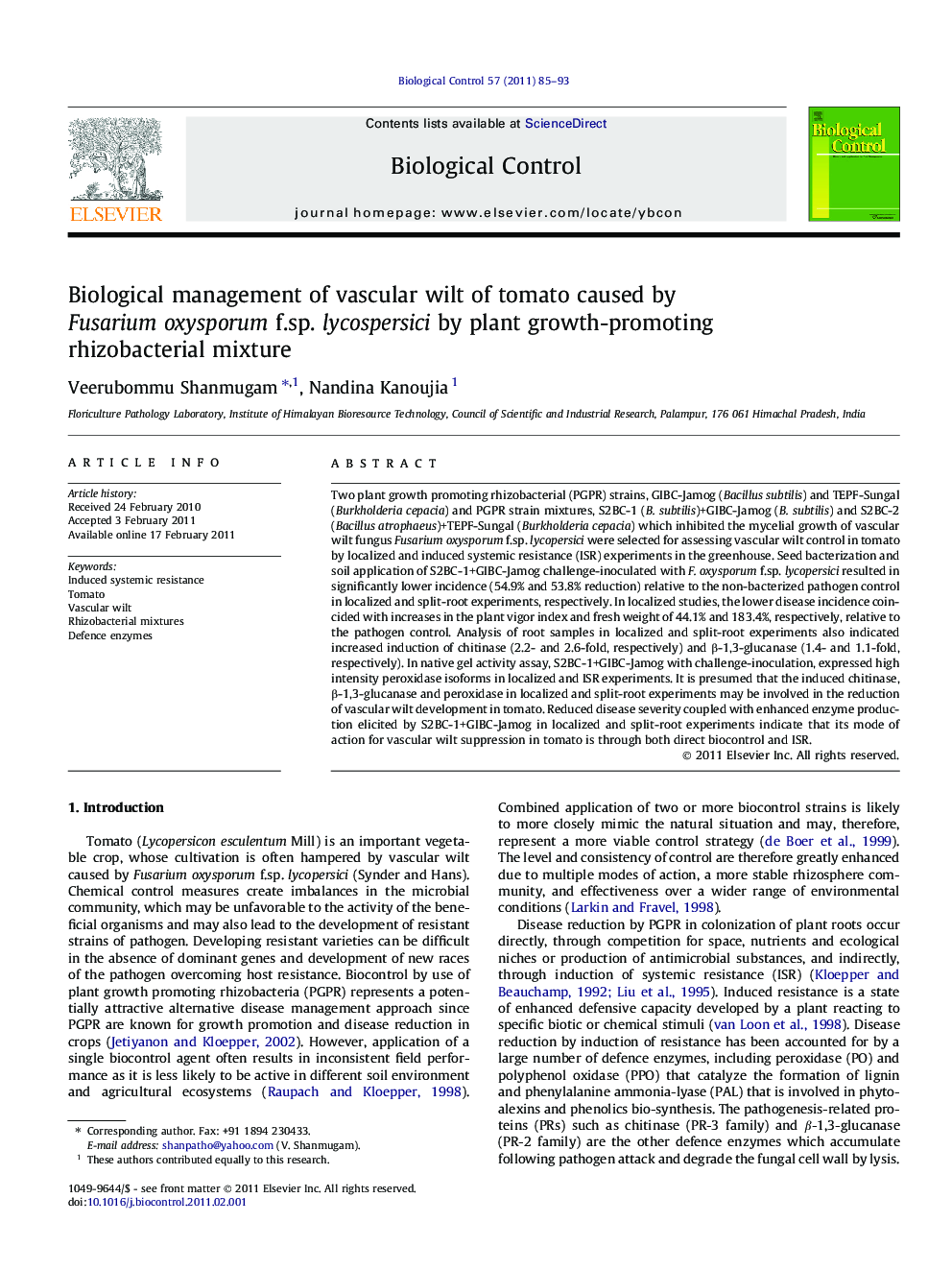| کد مقاله | کد نشریه | سال انتشار | مقاله انگلیسی | نسخه تمام متن |
|---|---|---|---|---|
| 4504204 | 1321078 | 2011 | 9 صفحه PDF | دانلود رایگان |

Two plant growth promoting rhizobacterial (PGPR) strains, GIBC-Jamog (Bacillus subtilis) and TEPF-Sungal (Burkholderia cepacia) and PGPR strain mixtures, S2BC-1 (B. subtilis)+GIBC-Jamog (B. subtilis) and S2BC-2 (Bacillus atrophaeus)+TEPF-Sungal (Burkholderia cepacia) which inhibited the mycelial growth of vascular wilt fungus Fusarium oxysporum f.sp. lycopersici were selected for assessing vascular wilt control in tomato by localized and induced systemic resistance (ISR) experiments in the greenhouse. Seed bacterization and soil application of S2BC-1+GIBC-Jamog challenge-inoculated with F. oxysporum f.sp. lycopersici resulted in significantly lower incidence (54.9% and 53.8% reduction) relative to the non-bacterized pathogen control in localized and split-root experiments, respectively. In localized studies, the lower disease incidence coincided with increases in the plant vigor index and fresh weight of 44.1% and 183.4%, respectively, relative to the pathogen control. Analysis of root samples in localized and split-root experiments also indicated increased induction of chitinase (2.2- and 2.6-fold, respectively) and β-1,3-glucanase (1.4- and 1.1-fold, respectively). In native gel activity assay, S2BC-1+GIBC-Jamog with challenge-inoculation, expressed high intensity peroxidase isoforms in localized and ISR experiments. It is presumed that the induced chitinase, β-1,3-glucanase and peroxidase in localized and split-root experiments may be involved in the reduction of vascular wilt development in tomato. Reduced disease severity coupled with enhanced enzyme production elicited by S2BC-1+GIBC-Jamog in localized and split-root experiments indicate that its mode of action for vascular wilt suppression in tomato is through both direct biocontrol and ISR.
The efficacy of in vitro selected rhizobacterial mixtures along with individual strains was assessed on vascular wilt reduction in tomato in both localized and induced systemic resistance experiments under greenhouse condition. The role of defence enzymes in disease suppression by the biocontrol agents was also ascertained.Figure optionsDownload as PowerPoint slideResearch highlights
► Antagonistic rhizobacterial strains and strain mixtures were assessed for vascular wilt control in tomato in the greenhouse.
► In localized and split-root experiments, a strain mixture of Bacillus subtilis was identified as a potential biocontrol agent.
► The treatment also greatly enhanced plant growth.
► Reduction in disease severity and increased plant growth coincided with elicitation of defence enzymes.
Journal: Biological Control - Volume 57, Issue 2, May 2011, Pages 85–93